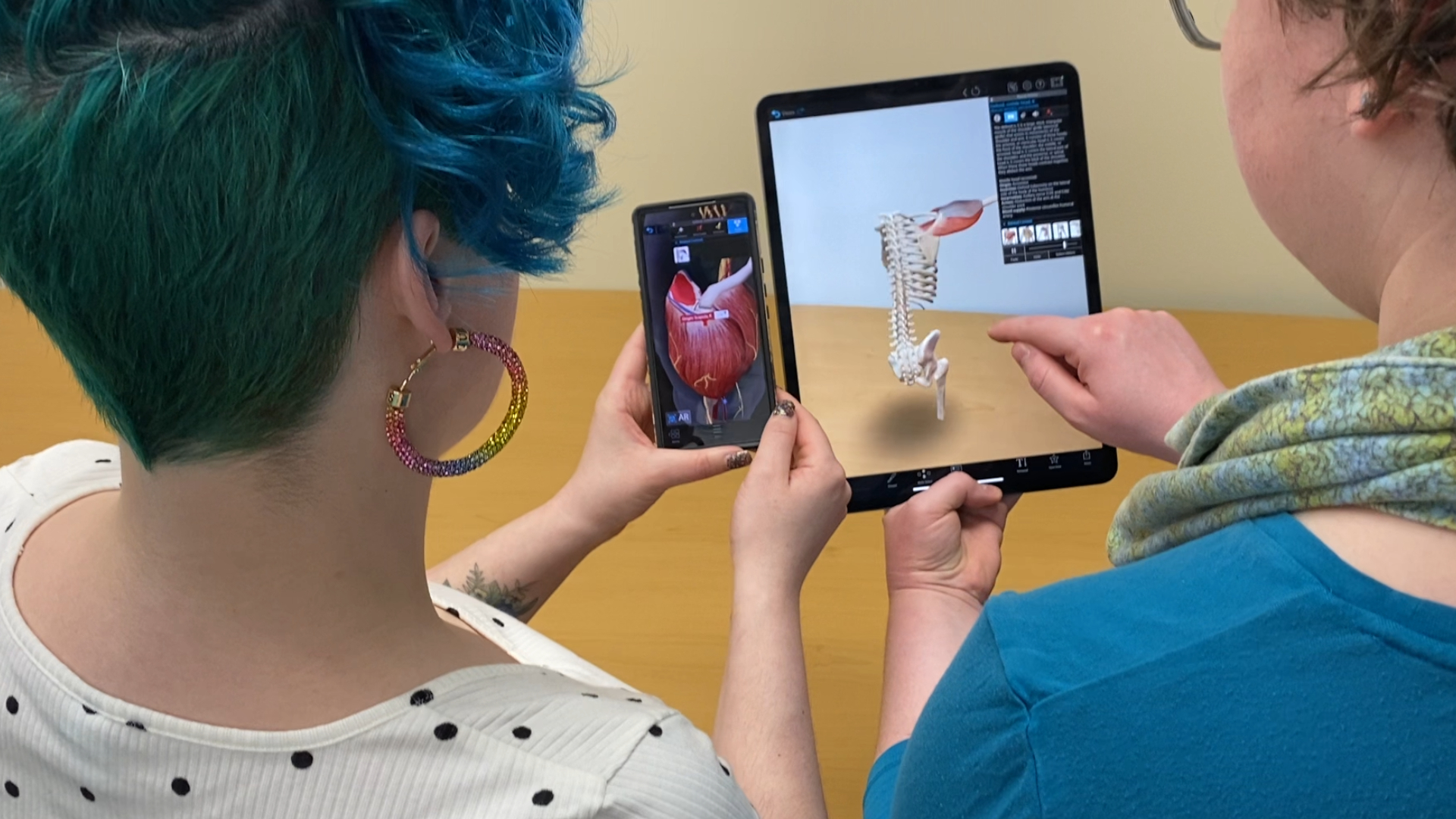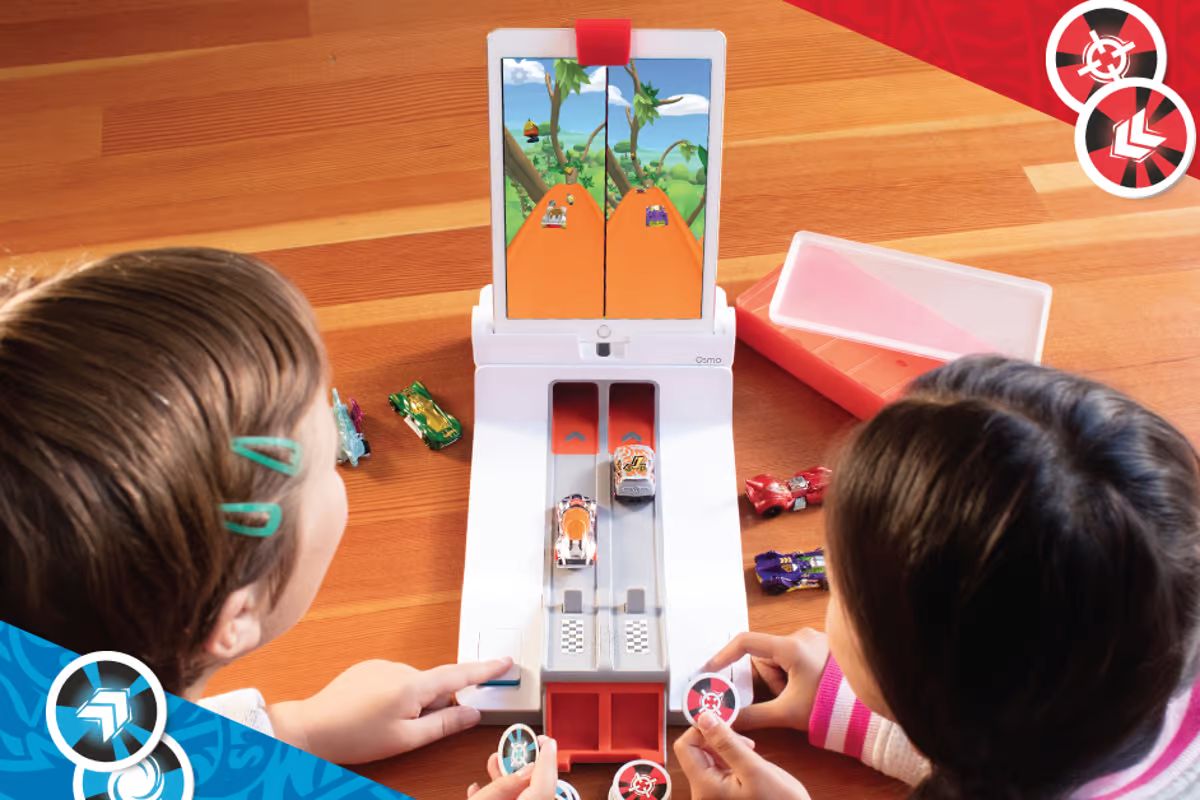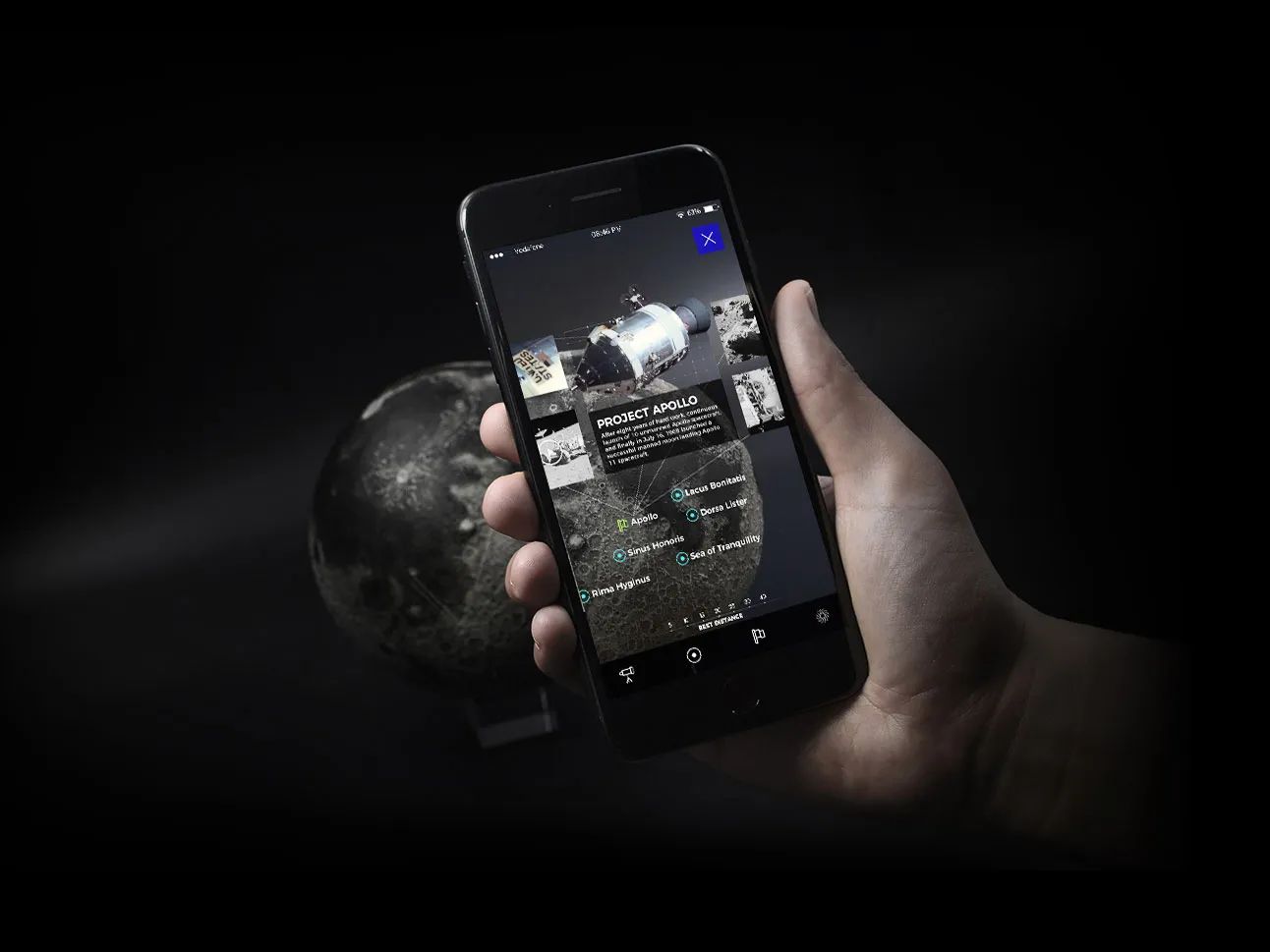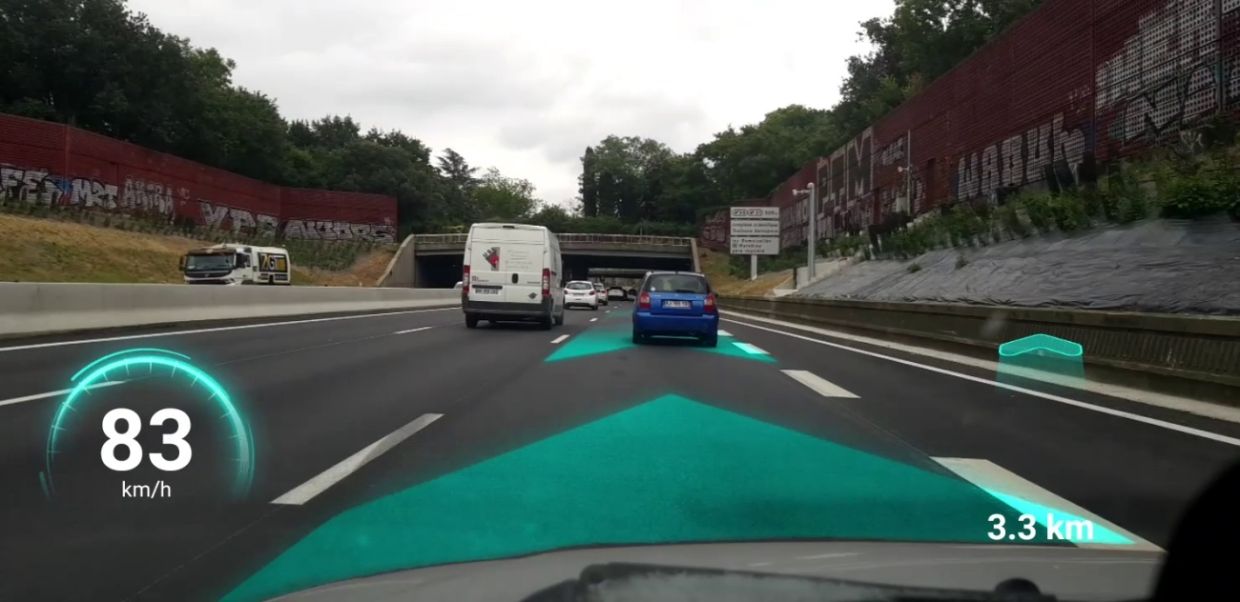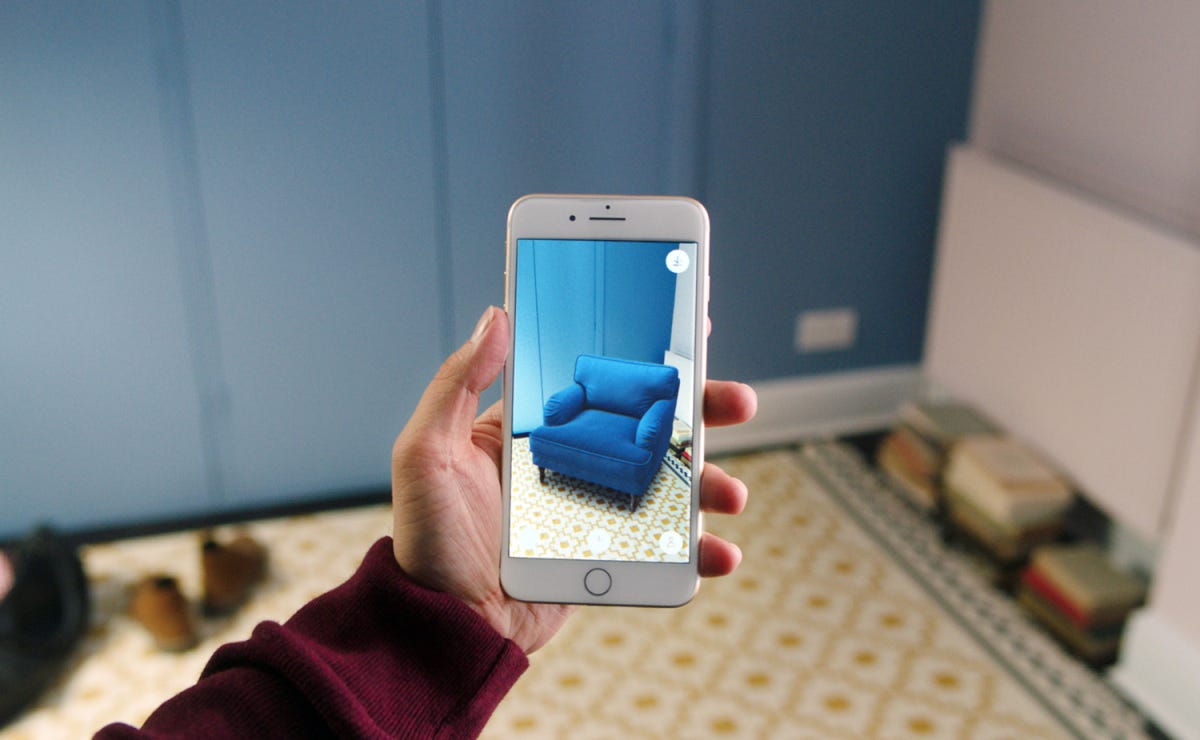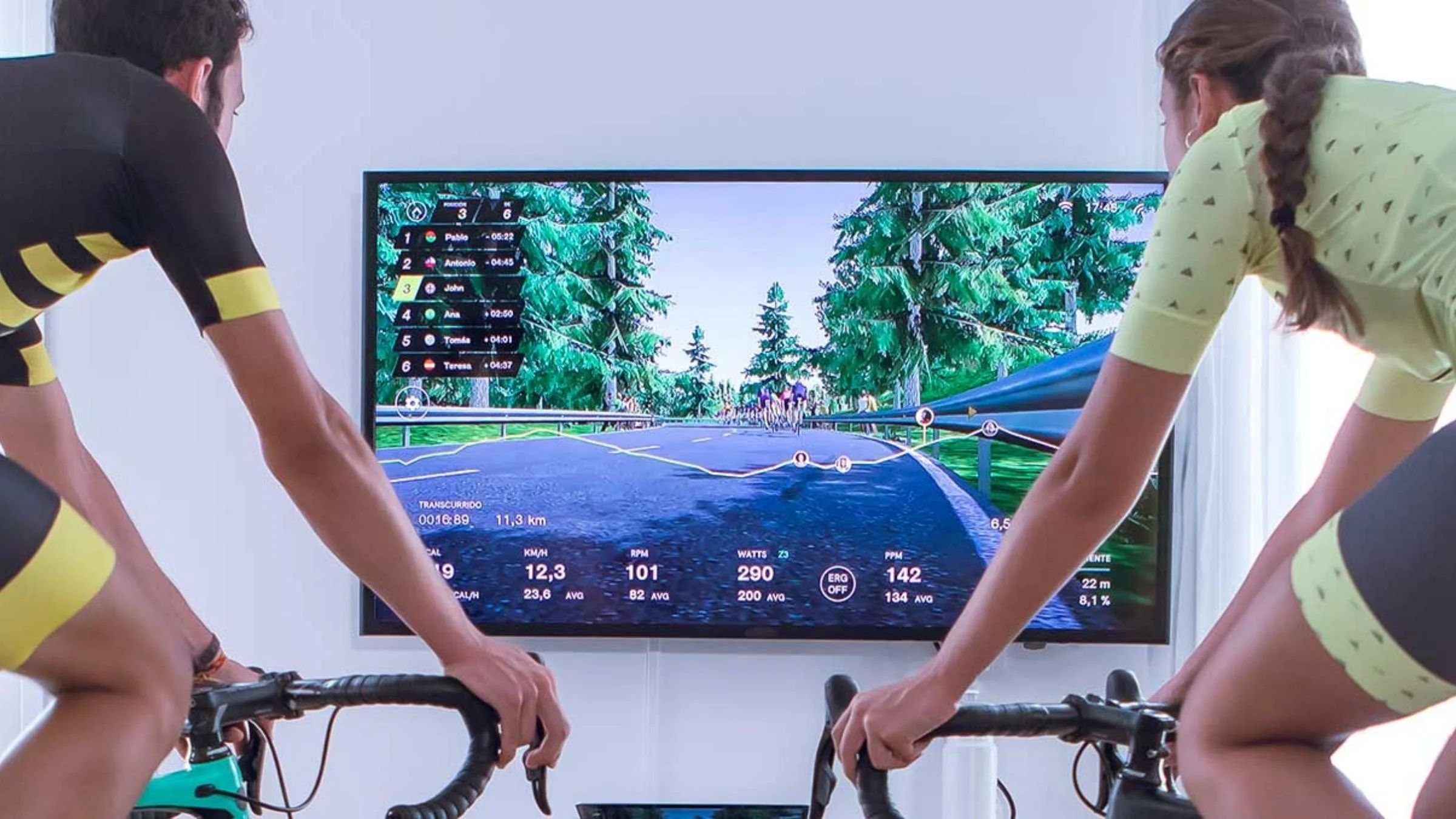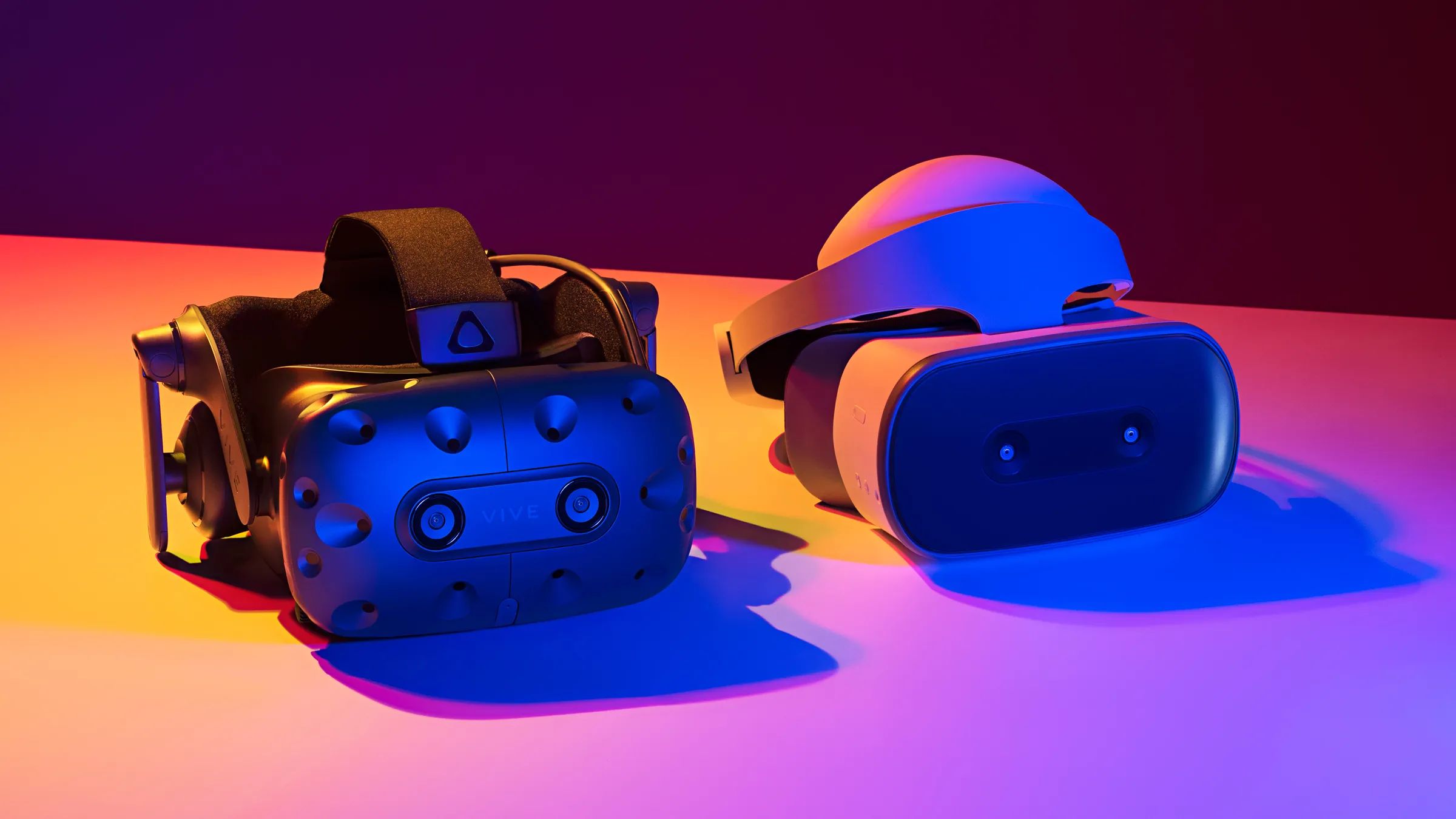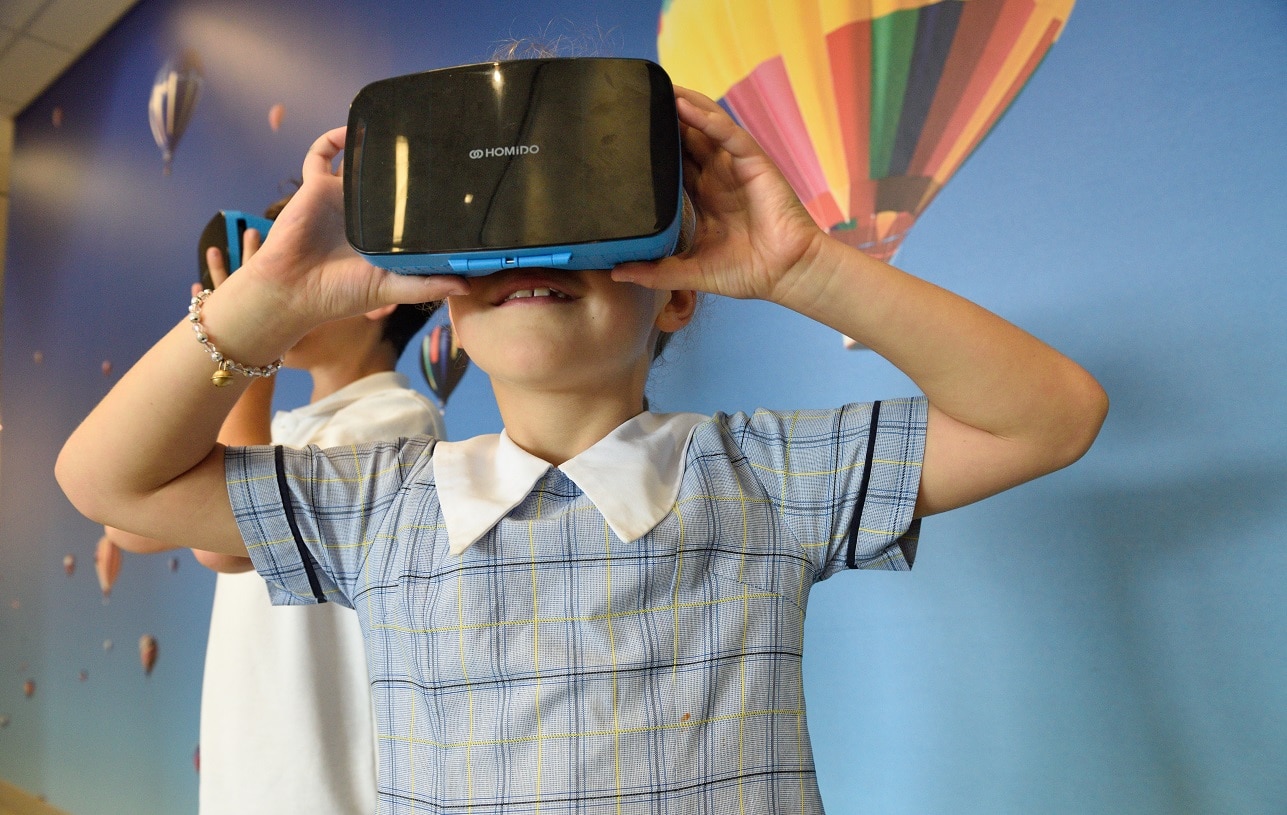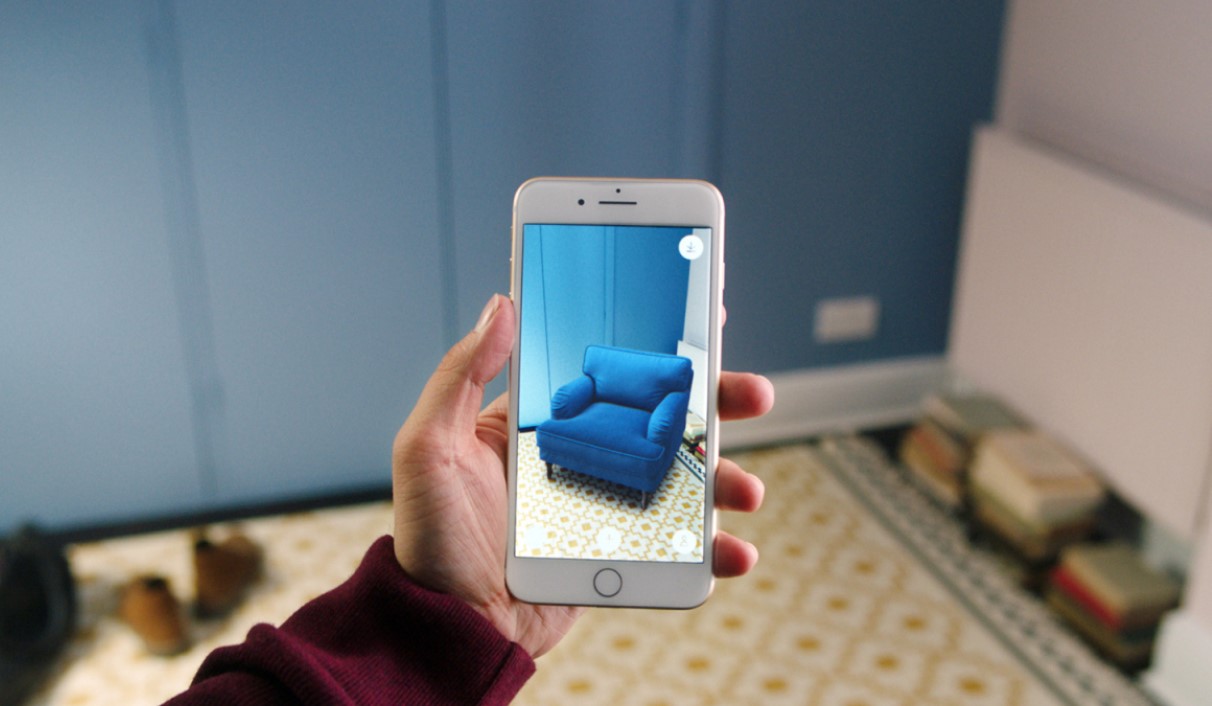Introduction
Technology has paved the way for groundbreaking innovations that have revolutionized various industries. One such innovation that is gaining widespread attention is augmented reality (AR). Augmented reality is a technology that merges digital content with the real world, enhancing our perception and experience of the environment.
AR has become increasingly popular over the past few years, thanks to the advancements in hardware and software capabilities. From gaming and entertainment to healthcare and education, the applications of AR are vast and diverse. But how exactly does augmented reality work? What are the underlying technologies that enable this seamless integration of the virtual and real worlds?
In this article, we will delve into the intricacies of augmented reality and explore how it functions. We will discuss the key components of AR, the role of sensors, the tracking and mapping process, and the programming and development aspects. By the end of this article, you will have a solid understanding of how augmented reality works and its potential applications in various fields.
But before we dive into the technical details, let’s clear up any confusion between augmented reality and virtual reality (VR). Although both are immersive technologies, they are fundamentally different.
What is augmented reality?
Augmented reality, often abbreviated as AR, is a technology that overlays digital information onto the real world, allowing users to interact and experience a combination of virtual and physical environments. Unlike virtual reality (VR), which immerses users in a completely virtual world, AR enhances the real-world environment by adding virtual elements in real time.
The concept of augmented reality may seem futuristic, but it has already made its way into our daily lives. Popular examples include mobile applications that let users try on virtual clothes or view virtual furniture in their living rooms. AR is also utilized in fields like medicine, architecture, and manufacturing to enhance visualization and provide real-time information.
AR can be experienced through various devices, such as smartphones, tablets, smart glasses, or even specialized AR headsets. These devices use cameras, sensors, and algorithms to track the user’s location and orientation in order to accurately overlay digital content onto the real world.
One of the key features of augmented reality is its ability to provide contextually relevant information. For example, when using an AR navigation app, you can see virtual arrows and directions overlaid onto the real-world environment, guiding you to your destination. This seamless integration of digital information with the real world creates an immersive and interactive experience.
Furthermore, augmented reality has the potential to transform industries and revolutionize the way we interact with technology. In the healthcare industry, AR can assist surgeons during complex procedures by overlaying important patient data onto their field of view, improving accuracy and precision. Architects and engineers can use AR to visualize and manipulate virtual building models in real-world settings, helping them streamline the design process and identify potential issues.
As AR technology continues to advance, we can expect to see even more innovative applications in fields like education, entertainment, retail, and beyond. Whether it’s through gaming, education, or practical applications, augmented reality has the power to enhance our reality and unlock new possibilities.
How does augmented reality differ from virtual reality?
Although both augmented reality (AR) and virtual reality (VR) are immersive technologies, they differ in their approach and the way they alter our perception of reality.
VR completely immerses users in a simulated virtual environment, cutting them off from the real world. Users wear VR headsets that replace their vision with a virtual display, often accompanied by audio and haptic feedback. This creates a fully immersive experience where users can explore and interact with a purely virtual world.
On the other hand, AR enhances the real world by overlaying virtual content onto it. Users can see and interact with virtual objects or information in their real environment through a device like a smartphone or smart glasses. AR supplements the real world, providing additional layers of information and digital elements without completely replacing the physical surroundings.
The main distinction between the two is the level of immersion and the extent to which users are disconnected from the real world. VR offers a more closed and isolated experience, while AR allows users to remain aware of their real surroundings.
In terms of applications and use cases, VR is often associated with gaming and entertainment. Users can be transported to fantastical virtual worlds, engage in virtual experiences, and interact with objects and characters that are entirely computer-generated.
AR, on the other hand, has a wider range of applications and practical uses. It can be utilized in various industries such as retail, healthcare, education, and more. AR can enhance shopping experiences by allowing customers to try on virtual clothes or see how furniture looks in their own homes. In medical training, AR can provide in-depth visualizations and guidance during procedures.
Another differentiating factor is the hardware requirements. VR typically requires high-performance headsets and controllers to create the immersive experience. AR, on the other hand, can be experienced through more accessible devices such as smartphones or lightweight smart glasses.
While both AR and VR have their unique strengths and applications, they are part of a broader spectrum of immersive technologies that are constantly evolving. As technology advances, we can expect to see further advancements and new possibilities in the realm of augmented and virtual realities.
The components of augmented reality
Augmented reality (AR) relies on a combination of hardware and software components to seamlessly blend virtual content with the real world. Understanding these components is essential to grasp the inner workings of AR technology. Let’s explore the key components of augmented reality:
- Display: The display is the medium through which virtual content is overlaid onto the real world. Modern AR devices utilize a variety of displays, such as smartphones, tablets, smart glasses, and specialized AR headsets. These displays may use technologies like LCD, OLED, or projection to present virtual content to the user.
- Sensors: Sensors play a crucial role in AR by capturing and interpreting information about the user’s environment. The most common sensors used in AR devices are cameras, gyroscopes, accelerometers, and GPS. Cameras allow devices to capture the real-world scene, while the other sensors provide data on the device’s position, orientation, and movement.
- Processor: The processor is responsible for handling the complex calculations and algorithms required for AR experiences. It analyzes sensor data, tracks the user’s position and orientation, and renders the virtual content in real time. To ensure smooth and responsive AR experiences, devices require powerful processors capable of handling the computational demands.
- Tracking: Tracking is a vital aspect of AR technology and involves accurately estimating the user’s position and orientation in the real world. This is done through a process known as motion tracking, which uses the data from sensors to continuously update the virtual content based on the user’s movement. Advanced tracking algorithms, such as SLAM (Simultaneous Localization and Mapping), are employed to ensure accurate and seamless AR experiences.
- Mapping: Mapping refers to the process of creating a digital representation of the user’s real-world environment. This helps AR devices understand the geometry and layout of the physical space where virtual content will be placed. Mapping is achieved through techniques like 3D scanning, depth sensing, and environmental mapping. By mapping the environment, AR devices can accurately place virtual objects and ensure they interact realistically with the real world.
- Software: AR software encompasses the applications, frameworks, and development tools used to create and deploy augmented reality experiences. Software developers leverage AR SDKs (Software Development Kits) that provide the necessary tools and libraries to build AR applications. These tools enable developers to create immersive AR experiences, interactive gestures, and interface elements that seamlessly blend with the real world.
These components work together to create the magic of augmented reality, blending the virtual and real worlds into one seamless experience. As technology continues to evolve, we can expect advancements in these components, resulting in even more immersive and sophisticated AR experiences.
The role of sensors in augmented reality
Sensors play a crucial role in enabling the seamless integration of virtual content with the real world in augmented reality (AR) experiences. These sensors, present in AR devices such as smartphones, tablets, smart glasses, and specialized AR headsets, provide essential data that is utilized to enhance and enrich the user’s perception of reality. Let’s dive into the various roles sensors play in augmented reality:
Camera Sensors: Cameras are one of the primary sensors used in AR devices. They capture visual data from the real-world environment and allow the AR system to observe and understand the surroundings. By analyzing the images and videos obtained from the camera, the AR system can track and map the user’s position and orientation accurately. Additionally, cameras enable the capture of the real-world scene and facilitate the overlay of virtual content onto specific objects or surfaces.
Gyroscope and Accelerometer: Gyroscopes and accelerometers are motion sensors found in AR devices. They measure the device’s orientation and movement in three-dimensional space. By continuously tracking these parameters, AR systems can determine the user’s head movements and adjust the positioning of virtual objects accordingly. This enables a more realistic and immersive AR experience as virtual content aligns with the user’s perspective and behaves as if it is physically present in the real world.
GPS (Global Positioning System): GPS is widely used in outdoor AR applications to determine the user’s geographic location. It provides precise coordinates, allowing AR systems to overlay location-based information onto the user’s field of view. For example, AR navigation applications can guide users with virtual arrows and directions overlaid on the real-world streets. GPS helps contextualize the AR experience within the user’s specific location, bringing augmented information directly relevant to their surroundings.
Depth Sensors: Depth sensors, such as structured light sensors or time-of-flight sensors, enable AR devices to measure the distance from the device to objects in the environment. This data is essential for creating a realistic sense of depth and occlusion of virtual content in relation to real-world objects. By understanding the depth information, AR systems can accurately place and anchor virtual objects in the user’s physical space, enhancing the overall visual coherence and realism of the AR experience.
Environmental Sensors: Environmental sensors like ambient light sensors and temperature sensors provide additional contextual information to the AR system. Ambient light sensors help adjust the AR display’s brightness and color temperature to match the lighting conditions of the environment. Temperature sensors ensure that the AR device operates within optimal temperature ranges. This sensor data enables AR systems to dynamically adapt and optimize the user experience based on the prevailing environmental factors.
By utilizing these sensors, AR devices can gather real-time data about the user’s surroundings, improve tracking accuracy, and provide a more immersive and interactive AR experience. As sensor technology continues to advance, we can expect even more sophisticated AR systems that deliver highly realistic and personalized augmented reality interactions.
The tracking and mapping process
The tracking and mapping process is a crucial aspect of augmented reality (AR) that enables devices to accurately overlay virtual content onto the real world. Through a combination of sensor data, algorithms, and mapping techniques, AR systems can track the user’s position and orientation in real time, as well as create a digital representation of their physical environment. Let’s explore the tracking and mapping process in more detail:
Tracking: Tracking in AR involves continuously monitoring the user’s movements and updating the position and orientation of virtual content accordingly. This is achieved through sensor data, such as data from cameras, gyroscopes, and accelerometers, which provide information about the user’s head movements and the device’s position in space. Sophisticated tracking algorithms, like SLAM (Simultaneous Localization and Mapping), are used to estimate and track the user’s position and movement relative to the real-world environment. By accurately tracking the user, AR systems can ensure that virtual objects appear anchored and aligned with the physical world.
Mapping: Mapping, also known as environment understanding, involves creating a digital representation of the physical surroundings where virtual content will be placed. By mapping the real-world environment, AR devices can understand the geometry, surfaces, and objects present in the environment. Mapping is accomplished through various techniques, including 3D scanning, depth sensing, and environmental mapping. For example, 3D scanning involves capturing the physical space using depth sensors to obtain a detailed 3D representation of the environment. This allows virtual content to interact realistically with the real-world objects and surfaces.
During the tracking and mapping process, AR systems combine the input from sensors with the device’s internal position and orientation tracking algorithms to accurately place and align virtual content in the real world. This involves sophisticated sensor fusion techniques to merge and synchronize data from different sensors, ensuring a seamless and cohesive AR experience.
It’s worth noting that the tracking and mapping process can be more challenging in certain environments, such as low-light conditions or environments lacking distinct visual features. In such cases, additional techniques like marker-based tracking or use of external tracking devices may be employed to enhance tracking accuracy.
Together, the tracking and mapping processes enable AR systems to precisely position virtual objects, graphics, and information in the user’s real-world environment. This seamless integration of virtual and physical elements creates a compelling and immersive augmented reality experience.
Displaying virtual content in the real world
One of the key elements of augmented reality (AR) is the ability to overlay virtual content onto the real world seamlessly. This process involves displaying virtual objects, graphics, and information in a way that they integrate convincingly with the user’s physical environment. Let’s explore how virtual content is displayed in AR:
Display Devices: AR experiences can be viewed through various devices, including smartphones, tablets, smart glasses, and specialized AR headsets. These devices use displays, such as LCD, OLED, or projection-based technology, to present the virtual content to the user. The quality and capabilities of the display greatly impact the visual fidelity and immersive nature of the AR experience.
Head-Up Display (HUD): Some AR devices, particularly smart glasses and AR headsets, incorporate heads-up displays that allow users to view virtual content while still being aware of their real-world surroundings. The HUD may overlay digital content onto a transparent screen, allowing users to see both the virtual and physical world simultaneously. This enhances the sense of immersion and interaction with the virtual objects.
Registration: Registration is the process of accurately aligning virtual content with the user’s real-world environment. This ensures that virtual objects appear in the correct position and orientation relative to the physical surroundings. Registration can be achieved through techniques like marker-based tracking, where physical markers are placed in the environment to help the AR system recognize and align virtual content accordingly. Other methods, such as natural feature tracking or simultaneous localization and mapping (SLAM), also aid in precise registration of virtual content.
Depth and Occlusion: To enhance the realism of virtual content in AR, depth and occlusion play crucial roles. Depth sensing technologies, such as structured light sensors or time-of-flight sensors, allow AR devices to understand the distance between virtual objects and the physical environment. This enables virtual objects to seamlessly appear behind or in front of real-world objects, creating a more convincing and immersive AR experience.
Interaction and Gestures: AR systems often allow users to interact with virtual content through gestures and physical movements. This can involve touching, dragging, or manipulating virtual objects as if they were tangible. Some AR devices incorporate gesture recognition technology or hand-tracking sensors to detect and interpret user gestures, providing a responsive and interactive AR experience.
By leveraging these display techniques and interactive capabilities, AR systems can overlay virtual content onto the user’s real-world environment in a way that enhances their perception and interaction with digital information. The goal is to seamlessly blend the virtual and physical elements, creating an engaging and immersive augmented reality experience.
Programming and developing augmented reality applications
Programming and developing augmented reality (AR) applications requires a combination of specialized tools, frameworks, and programming languages to create immersive and engaging experiences. Let’s explore the key aspects of programming and developing AR applications:
AR Software Development Kits (SDKs): AR software development kits provide a set of tools, libraries, and APIs specifically designed for developing AR applications. These SDKs offer a range of functionalities, such as camera access, sensor integration, tracking algorithms, and rendering capabilities. Some popular AR SDKs include ARCore (for Android), ARKit (for iOS), Vuforia, and Unity AR Foundation. These SDKs simplify the development process by providing ready-to-use components and features for developers to build upon.
Tracking and Mapping: AR applications require robust tracking and mapping algorithms to accurately position virtual content in the user’s real-world environment. This involves implementing tracking algorithms, such as SLAM (Simultaneous Localization and Mapping), to track the user’s position and orientation in real time. Mapping techniques, like 3D scanning or depth sensing, may also be incorporated to create digital representations of the physical environment. Development frameworks and libraries, such as OpenCV or ARCore, can assist in implementing these tracking and mapping functionalities.
3D Modeling and Animation: To create virtual objects and graphics for AR applications, developers often incorporate 3D modeling and animation tools. This involves designing virtual assets, such as 3D models, textures, and animations, to be rendered and displayed in the AR environment. Popular software tools for 3D modeling and animation include Blender, Unity, Autodesk Maya, or SketchUp. These tools allow developers to create and customize virtual content to enhance the user experience in AR applications.
User Interaction: AR applications often involve user interaction through gestures, touch input, or voice commands. Implementing these interaction methods requires programming interfaces and event handling systems to detect and respond to user inputs. Frameworks like Unity, Unreal Engine, or Apple’s RealityKit provide built-in support for implementing user interactions in AR applications with their respective scripting languages.
Testing and Debugging: Testing and debugging are critical stages in the development of AR applications. AR developers need to ensure that virtual content aligns correctly with the real-world environment, tracking is accurate, and interactions function as intended. Device emulators, simulators, and real-device testing are employed to verify the application’s behavior across different platforms and scenarios. Additionally, AR-specific debugging tools, provided by AR SDKs or development environments, assist in identifying and resolving issues in the application logic and performance.
As the field of AR development continues to evolve, new tools, frameworks, and resources emerge, making it increasingly accessible for developers to create AR experiences. Staying up-to-date with advancements and best practices in AR development is crucial for creating immersive and successful AR applications.
The future of augmented reality
The realm of augmented reality (AR) continues to evolve rapidly, and its future holds immense potential for transformative applications and experiences. As technological advancements continue to unfold, we can anticipate several exciting developments:
Advancements in Hardware: AR hardware is expected to become more sophisticated and accessible. We can anticipate the development of lightweight, high-resolution AR glasses that seamlessly integrate with our daily lives. These next-generation AR devices will offer improved displays, longer battery life, and advanced tracking capabilities, enhancing the overall AR experience.
Wider Adoption Across Industries: Currently, AR is being embraced in various industries such as gaming, education, healthcare, and architecture. Moving forward, we are likely to witness even broader adoption of AR. For instance, retail businesses may use AR to provide virtual try-on experiences for products, while museums and cultural institutions could offer interactive AR-guided tours. The potential applications of AR in training, remote collaboration, and data visualization are immense, paving the way for enhanced productivity and efficiency.
Integration with Artificial Intelligence (AI): The fusion of AR and AI technologies holds tremendous promise. AI algorithms can be utilized to recognize objects, understand gestures, and interpret real-time data captured by AR devices. This integration can lead to more intelligent and context-aware AR experiences, providing personalized information, recommendations, and assistance to users.
Improved Spatial Mapping and Object Recognition: As AR technology progresses, we can expect advancements in spatial mapping and object recognition capabilities. AR systems will become more proficient at understanding complex environments and distinguishing between different objects and surfaces. This will contribute to more accurate and realistic virtual object placement and interaction within the real-world environment.
AR Cloud: The development of an “AR Cloud” infrastructure is an exciting prospect for the future of AR. This AR Cloud would be a shared, persistent digital layer that connects virtual content to specific locations and objects in the real world. This would enable users to access and interact with shared AR content, fostering social AR experiences and opening up opportunities for collaborative interactions across different devices and platforms.
AR in Wearables and IoT: With the rise of wearables and the Internet of Things (IoT), AR has the potential to integrate with these technologies seamlessly. AR-enabled devices could provide real-time information directly on our wrists or embedded within everyday objects. This merging of AR with wearables and IoT can enhance convenience, connectivity, and productivity in our daily lives.
Ultimately, the future of augmented reality holds boundless possibilities. As technology advances, it will empower us to explore new dimensions, blur the lines between the physical and digital worlds, and unlock unprecedented opportunities for information sharing, entertainment, communication, and creativity.
Conclusion
Augmented reality (AR) has emerged as a groundbreaking technology that blends the virtual and real worlds in remarkable ways. By overlaying digital content onto the physical environment, AR enhances our perception of reality, opening up limitless possibilities across various industries and sectors.
Throughout this article, we have explored the fundamental concepts and components of augmented reality. We have seen how AR differs from virtual reality, the essential role of sensors in tracking and mapping, and the process of displaying virtual content seamlessly in the real world. Moreover, we have touched upon the programming and development aspects of AR applications and discussed the potential future directions of this transformative technology.
As AR technology advances, we can expect continued improvements in hardware capabilities, leading to more immersive and accessible AR experiences. Greater integration with artificial intelligence will enhance the context-awareness and sophistication of AR applications. Moreover, developments in spatial mapping, object recognition, and the establishment of an AR Cloud infrastructure will further augment the potential uses of this technology.
The future of augmented reality holds promises of enhanced productivity, personalized experiences, and unprecedented levels of interaction between the physical and digital realms. AR has the potential to revolutionize industries such as healthcare, education, retail, entertainment, and more.
As developers, researchers, and innovators continue to push boundaries, we are poised to witness an exciting evolution of augmented reality. From immersive gaming experiences to practical applications in training, navigation, and design, AR is set to reshape the way we perceive and interact with the world around us.
With each new advancement, we move closer to unlocking the full potential of augmented reality. Ultimately, it is up to us to harness this technology responsibly and ethically and explore the endless possibilities that AR offers. The future is bright for augmented reality, and we eagerly await the transformative experiences that lie ahead.







